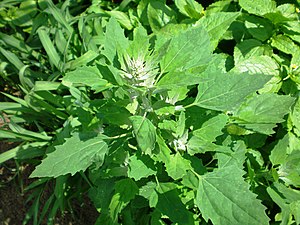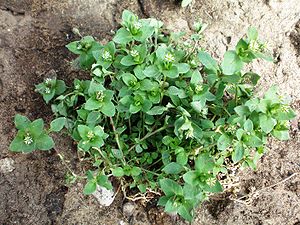Difference between revisions of "AY Honors/Agriculture/Answer Key/es"
(Created page with "</noinclude> <!-- 3. Examinar la germinación de tres variedades de semillas, 100 semillas por cada variedad. Registrar el porcentaje de germinación después de tres, cuatro...") |
(Created page with "</noinclude> <!-- 4. Explicar cómo las plantas obtienen nutrientes y cómo los convierten en comida. Explicar las diferencias entre nutrientes primarios, secundarios y micron...") |
||
| Line 44: | Line 44: | ||
{{ansreq|page={{#titleparts:{{PAGENAME}}|2|1}}|num=4}} | {{ansreq|page={{#titleparts:{{PAGENAME}}|2|1}}|num=4}} | ||
<noinclude></noinclude> | <noinclude></noinclude> | ||
| − | <!-- 4. | + | <!-- 4. Explicar cómo las plantas obtienen nutrientes y cómo los convierten en comida. Explicar las diferencias entre nutrientes primarios, secundarios y micronutrientes. --> |
| − | |||
{{clear}} | {{clear}} | ||
Revision as of 21:33, 9 March 2021
Agricultura
Autoridad de aprobación:
Categoría:
Nivel de destreza:
Año de introducción:
![]()
Contenido
1
2
3
La especialidad de Semillas - Avanzado tiene un requisito similar, entonces considere desarrollarlas juntas.
4
5
Chenopodium album
| Chenopodium album (Fat hen) | |
|---|---|
|
Where found: Worldwide
Description: Chenopodium album is a fast-growing weedy annual plant in the genus Chenopodium. The standard English name is Fat-hen; other names include white goosefoot, lamb's quarters, pigweed or dungweed, or more ambiguously as just goosefoot.
Control: It may be controlled by dark tillage, rotary hoeing, or flaming when the plants are small. Crop rotation of small grains will suppress an infestation. It is, however, difficult to control with chemical means.
|
 |
Stellaria
| Stellaria (Chickweed) | |
|---|---|
|
Where found: Europe, North America
Description: Stellaria is a genus of about 90-120 species flowering plants in the family Caryophyllaceae, with a cosmopolitan distribution. Common names include stitchwort and chickweed.
Control: Control is difficult due to the heavy seed sets, although herbicides are effective when the plants are small. Common Chickweed is very competitive with small grains, and can produce up to 80% yield losses among barley.
|
 |
6
7
Climate is what to expect. Weather is what you get. Climate is basically a long-term average of what the weather has done in the past.
8
Your log need not be any more complicated than a notebook and pen. You could include information such as:
- Plowing/Discing
- When was it done?
- What was the condition of the soil?
- Cost
- Planting
- Date
- Amount of seed used
- Method (how was the planting done?)
- Cost
- Fertilizer
- When applied
- What kind was applied
- Cost
- Pest Control
- Dates and types of pesticides and herbicides
- Cultivation dates
- Mechanical/cultural controls applied
- Cost
- Irrigation
- Dates
- Rainfall dates
- Cost
- Harvest
- Date
- Yield
9
9a
9b
9c
9d
9e
10
The greatest benefit birds provide to farmers is their voracious appetites for insects.
11
Erosion is the displacement of soil by wind, water, or ice by downward or down-slope movement. It can occur quickly on steep ground - especially if there is nothing growing there. It can be slowed by minimizing the amount of time the land has nothing growing on it. When plowing, discing, or planting, it is best to make furrows perpendicular to the slope of the ground. Plowing straight uphill will cause furrows to act as ever-widening ditches that channel the water quickly away, carrying soil with it. Plowing across a hill instead slows the descent of rainwater and allows it to drop the sediments it picks up rather than carrying it off.
12
Referencias
